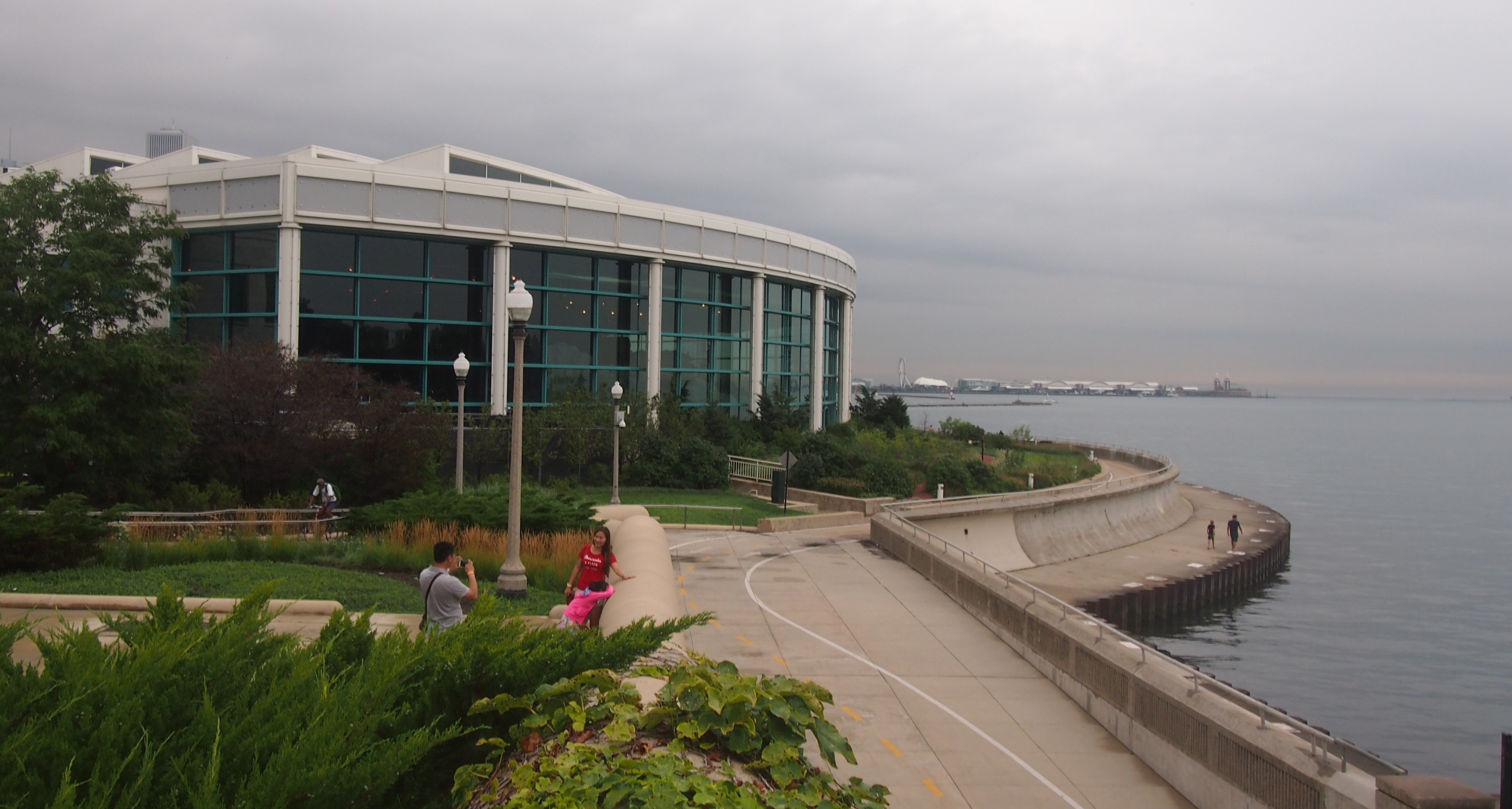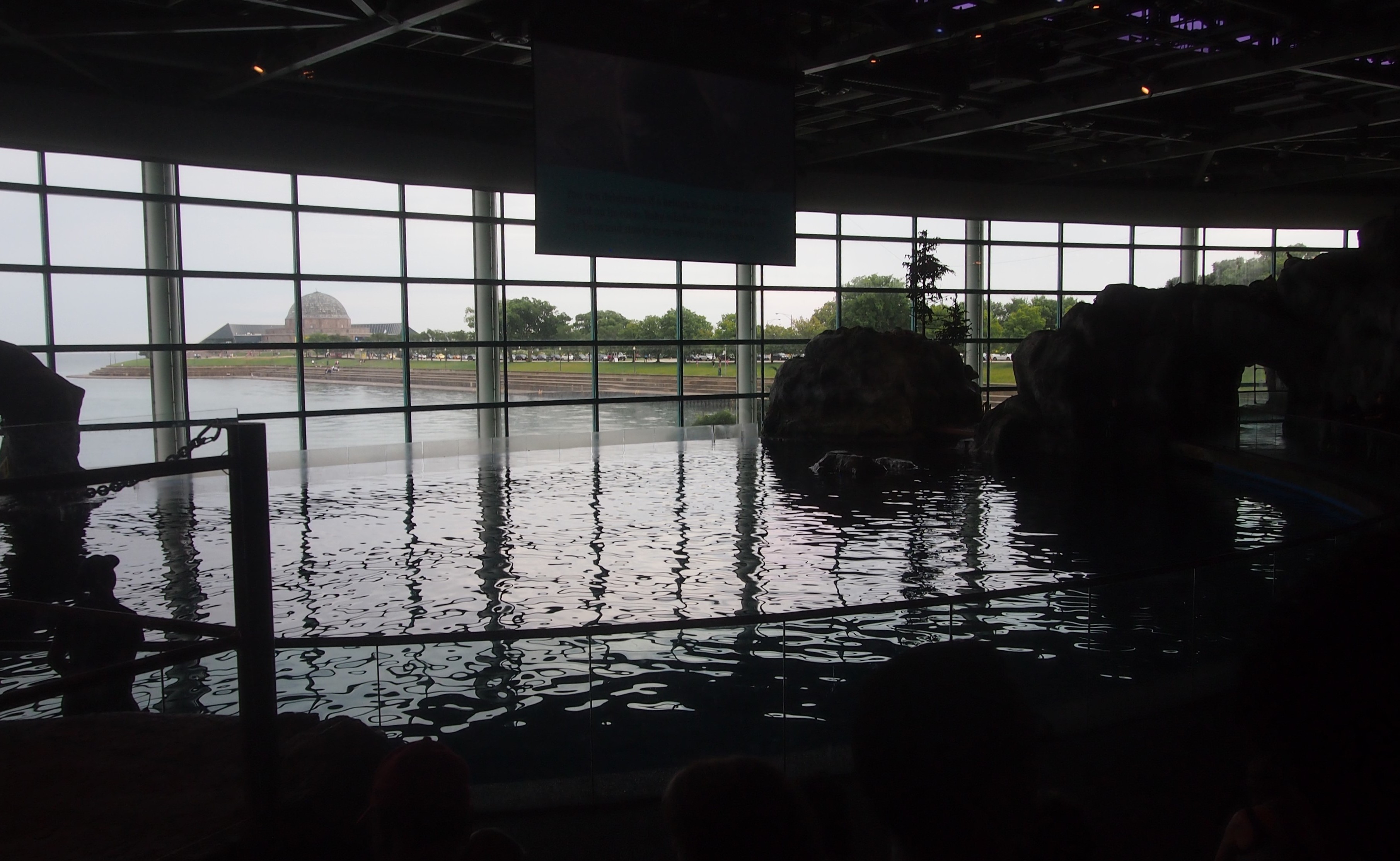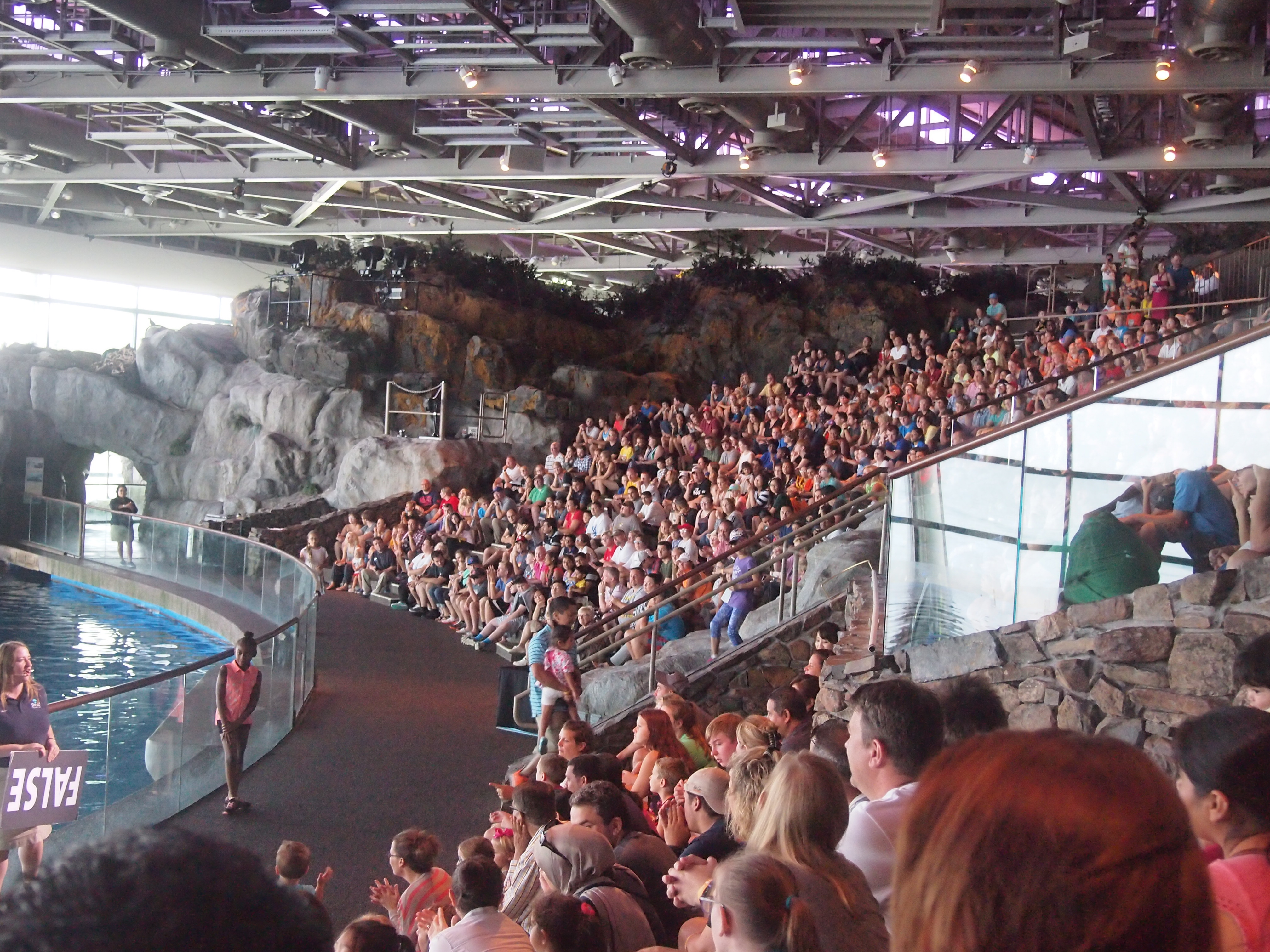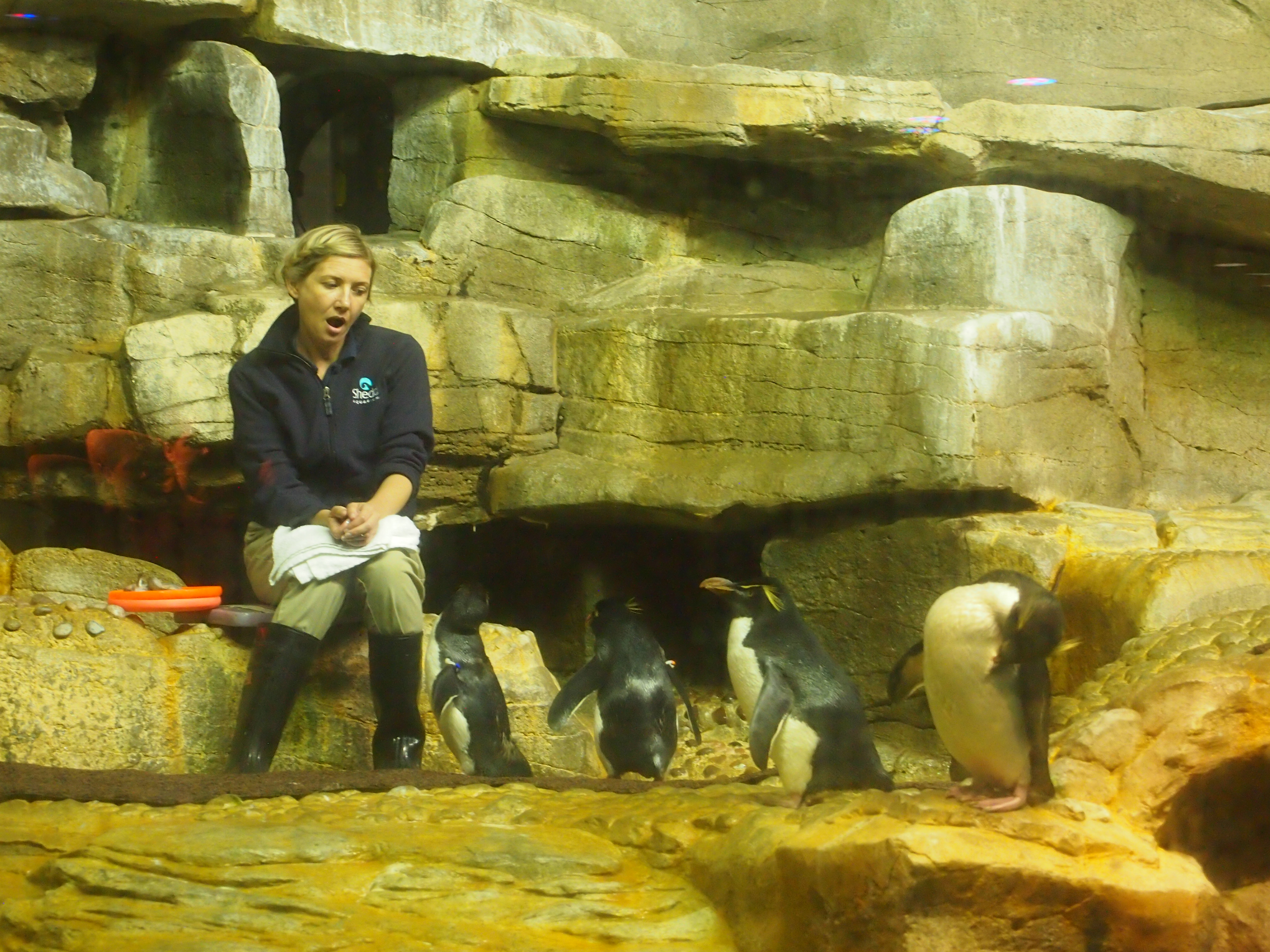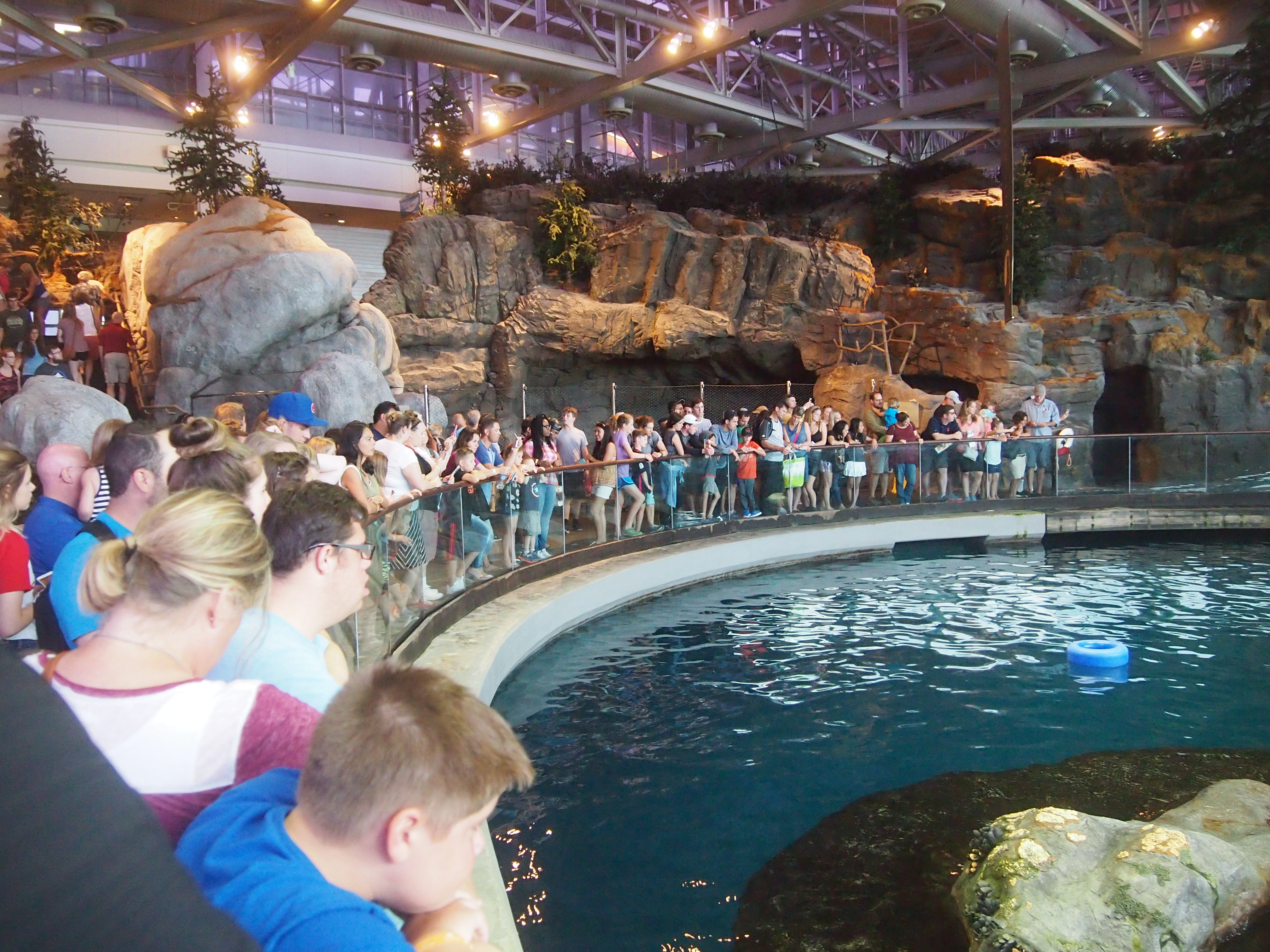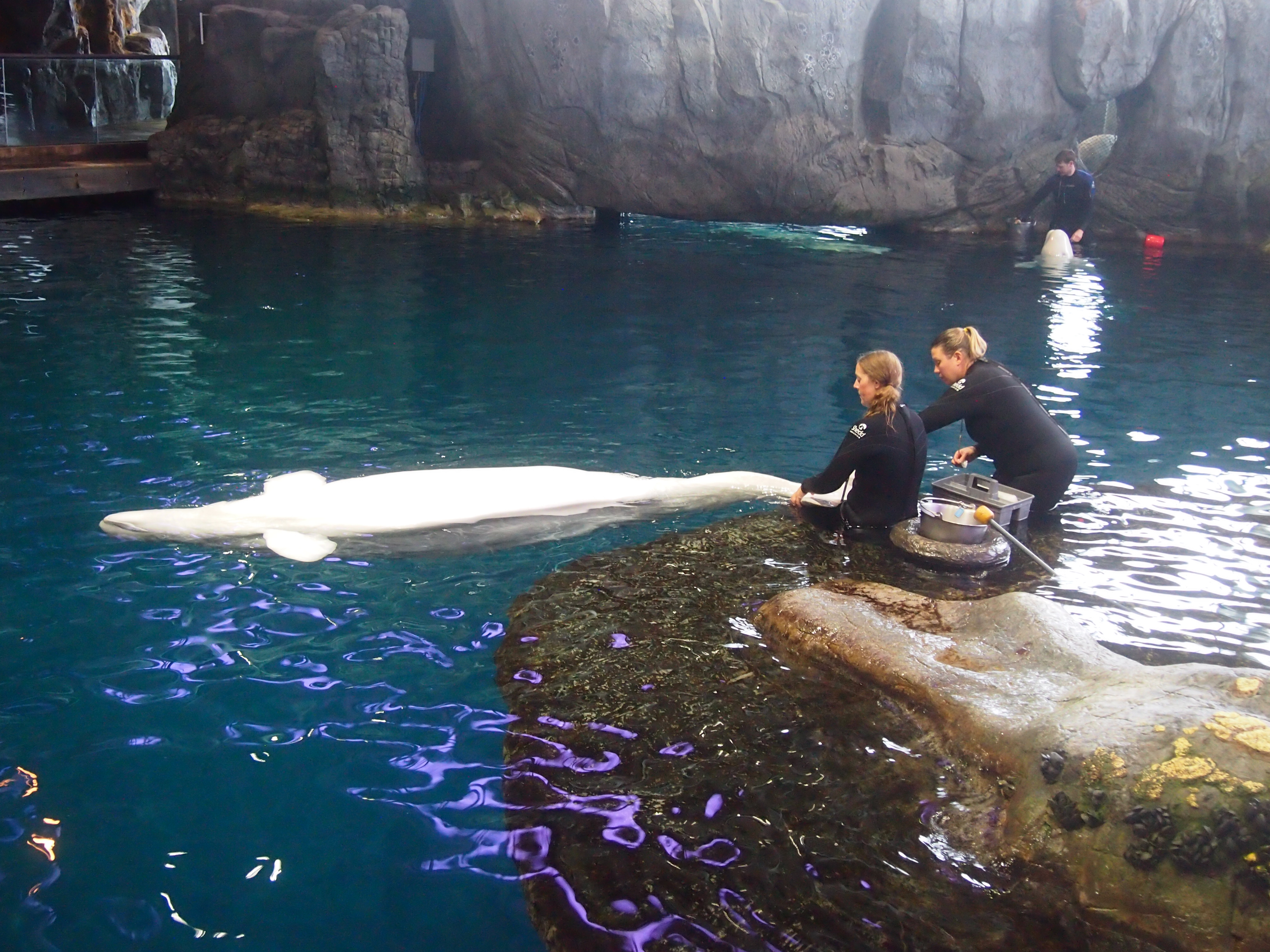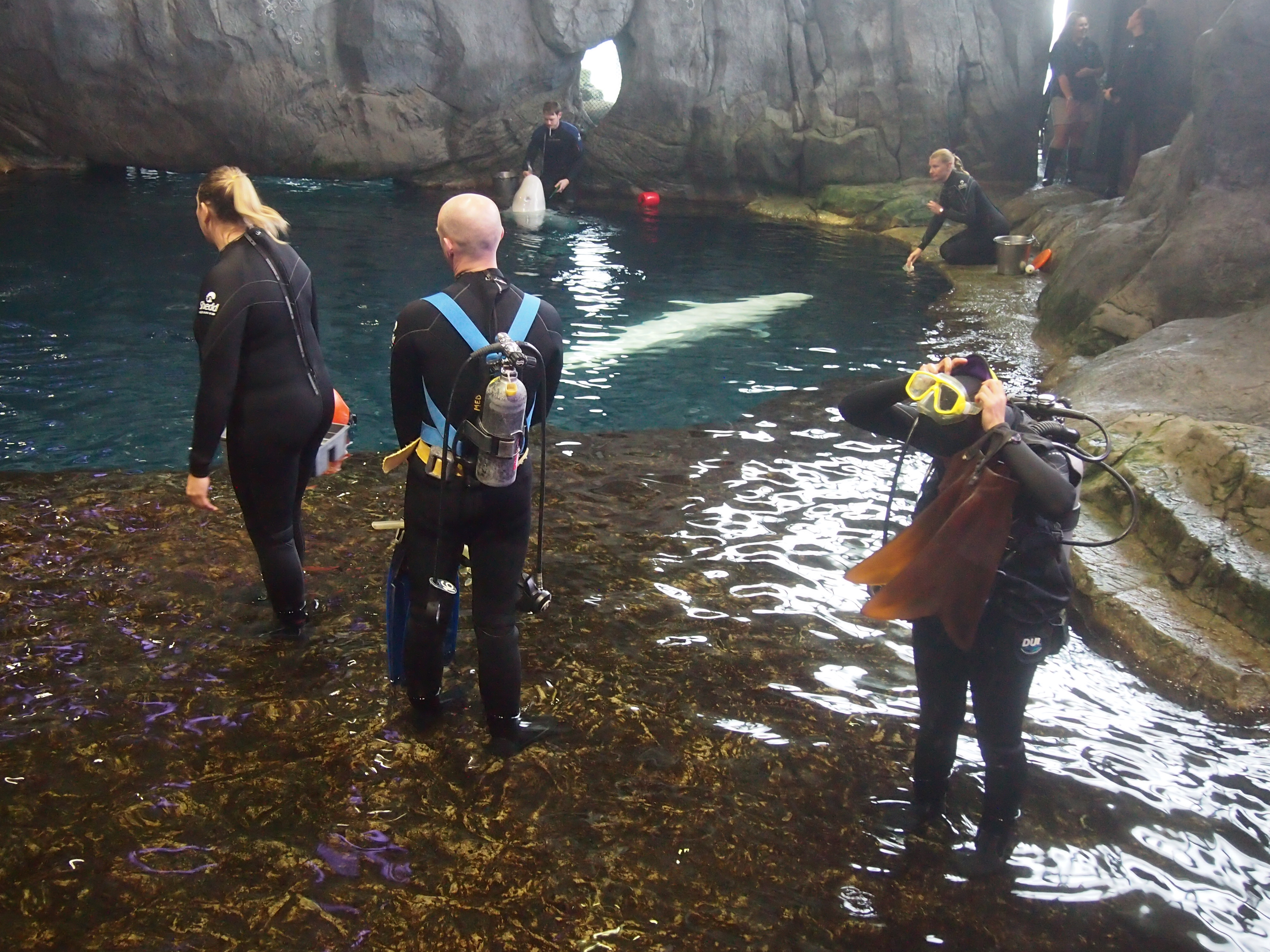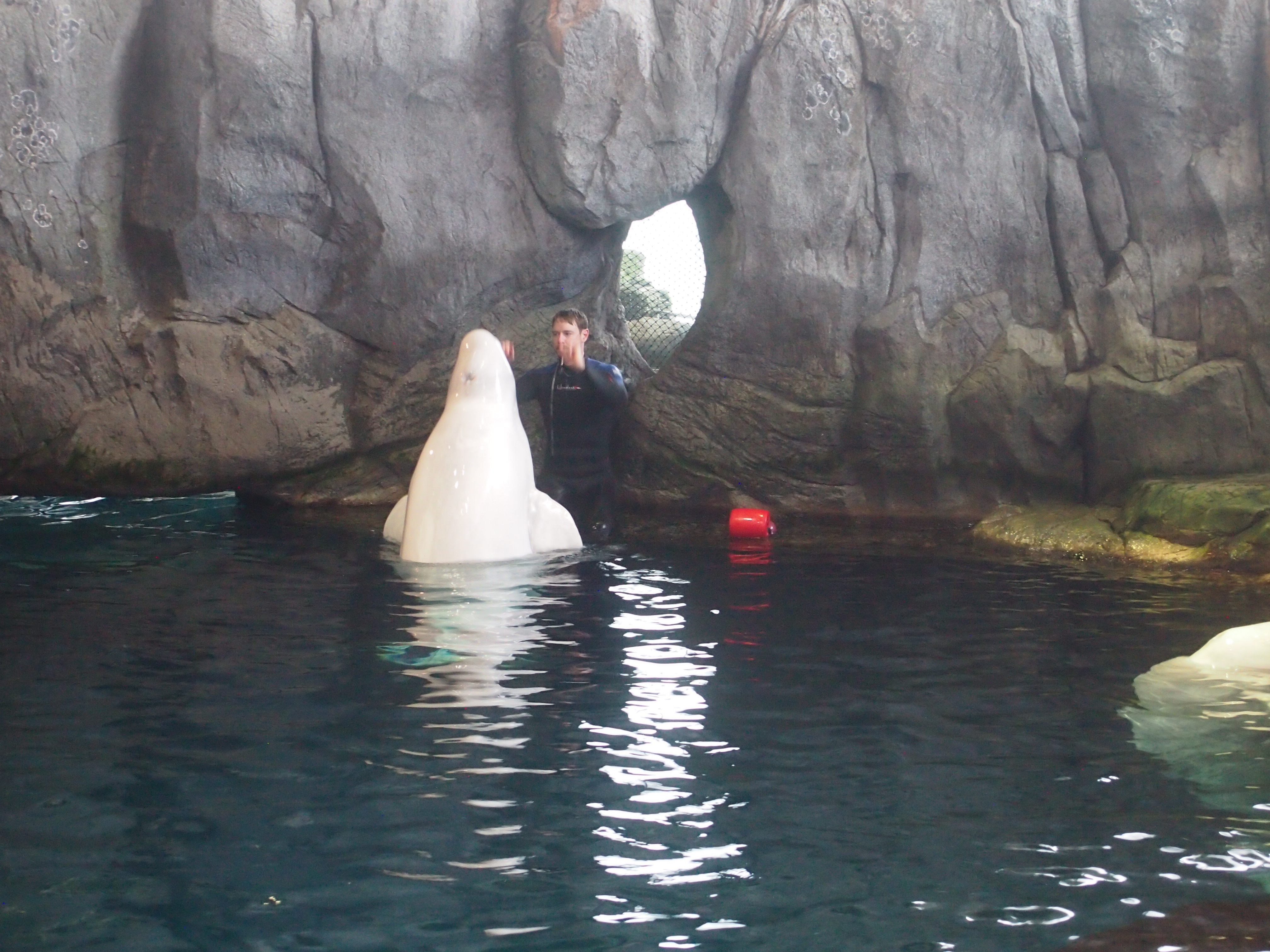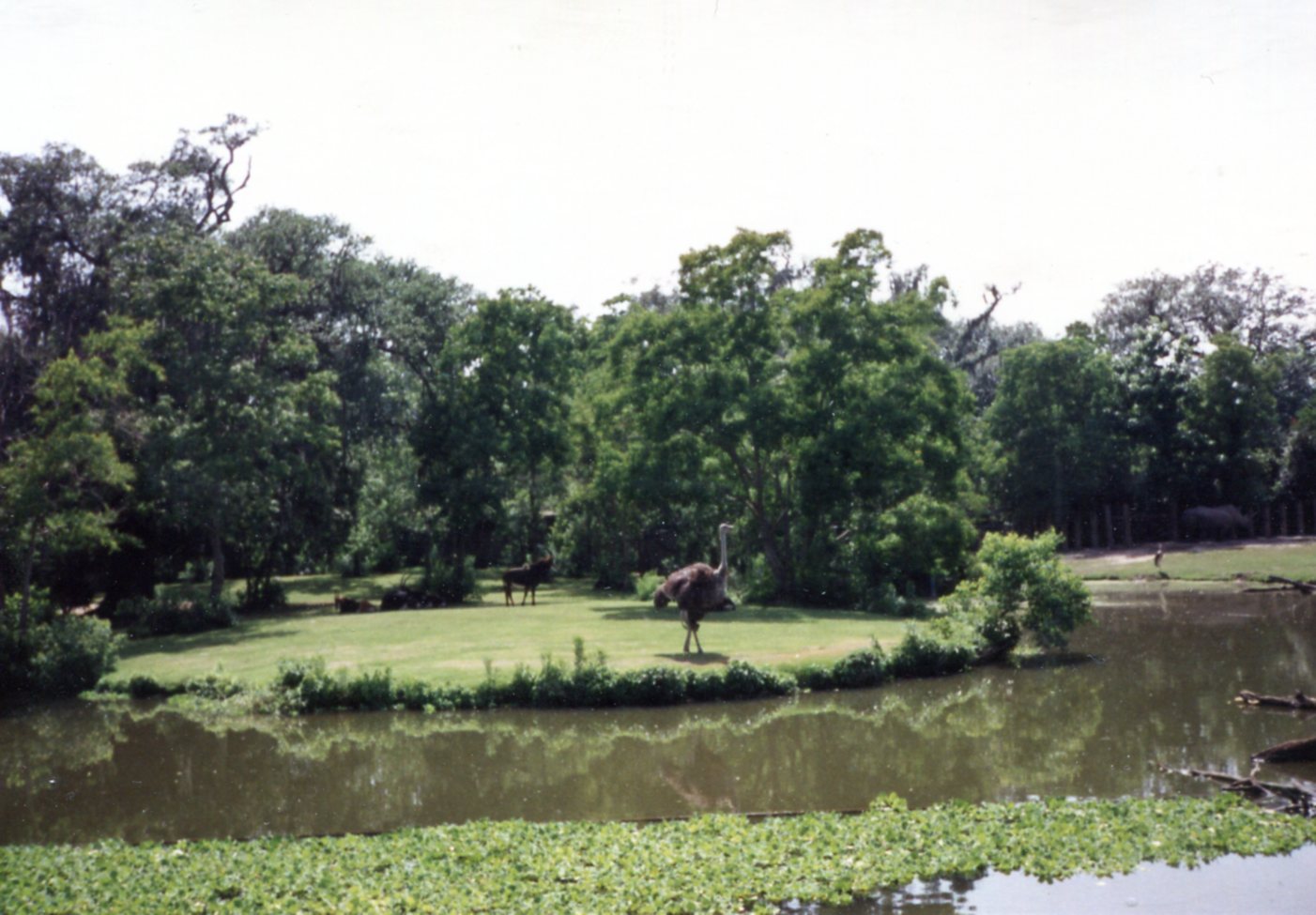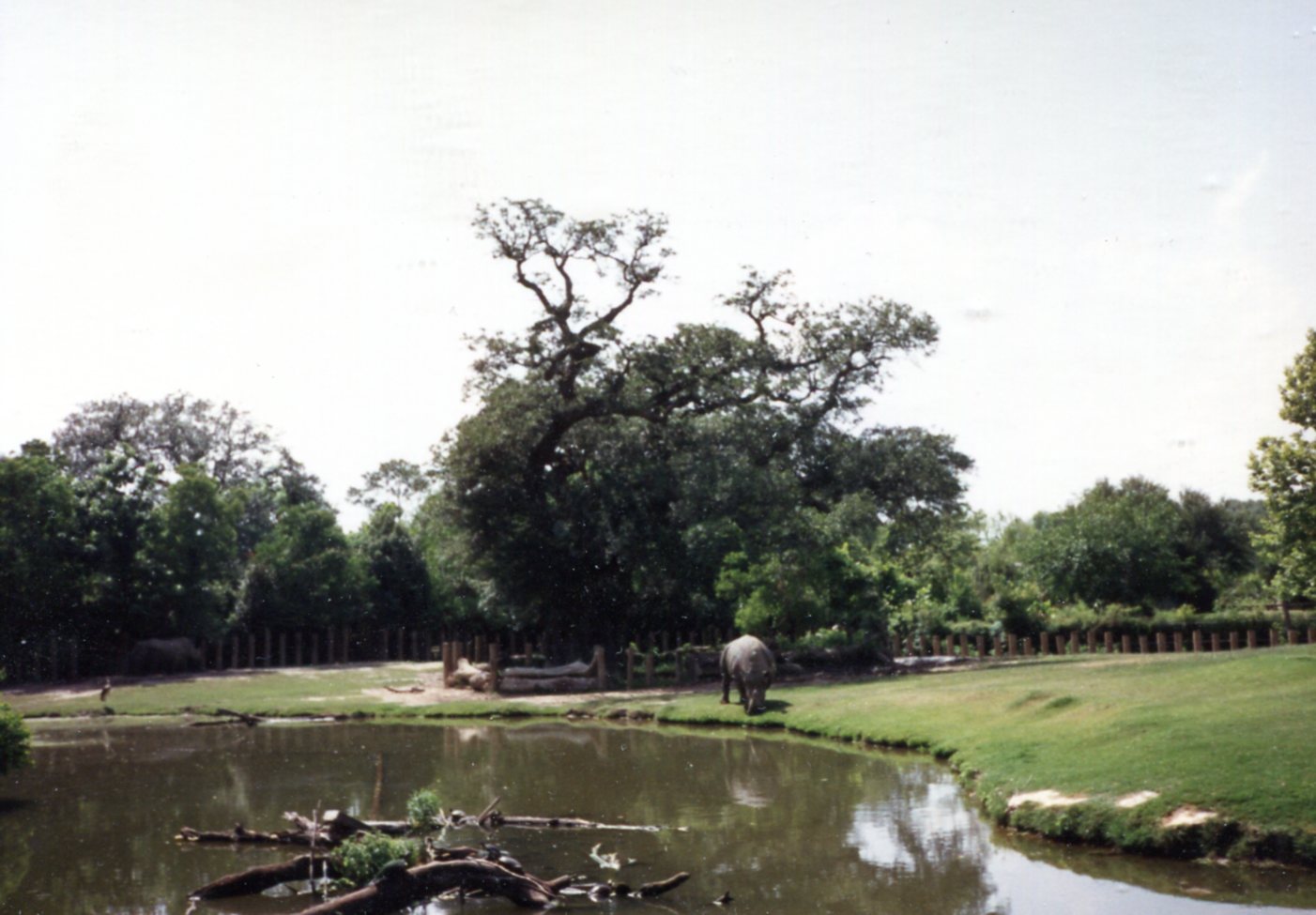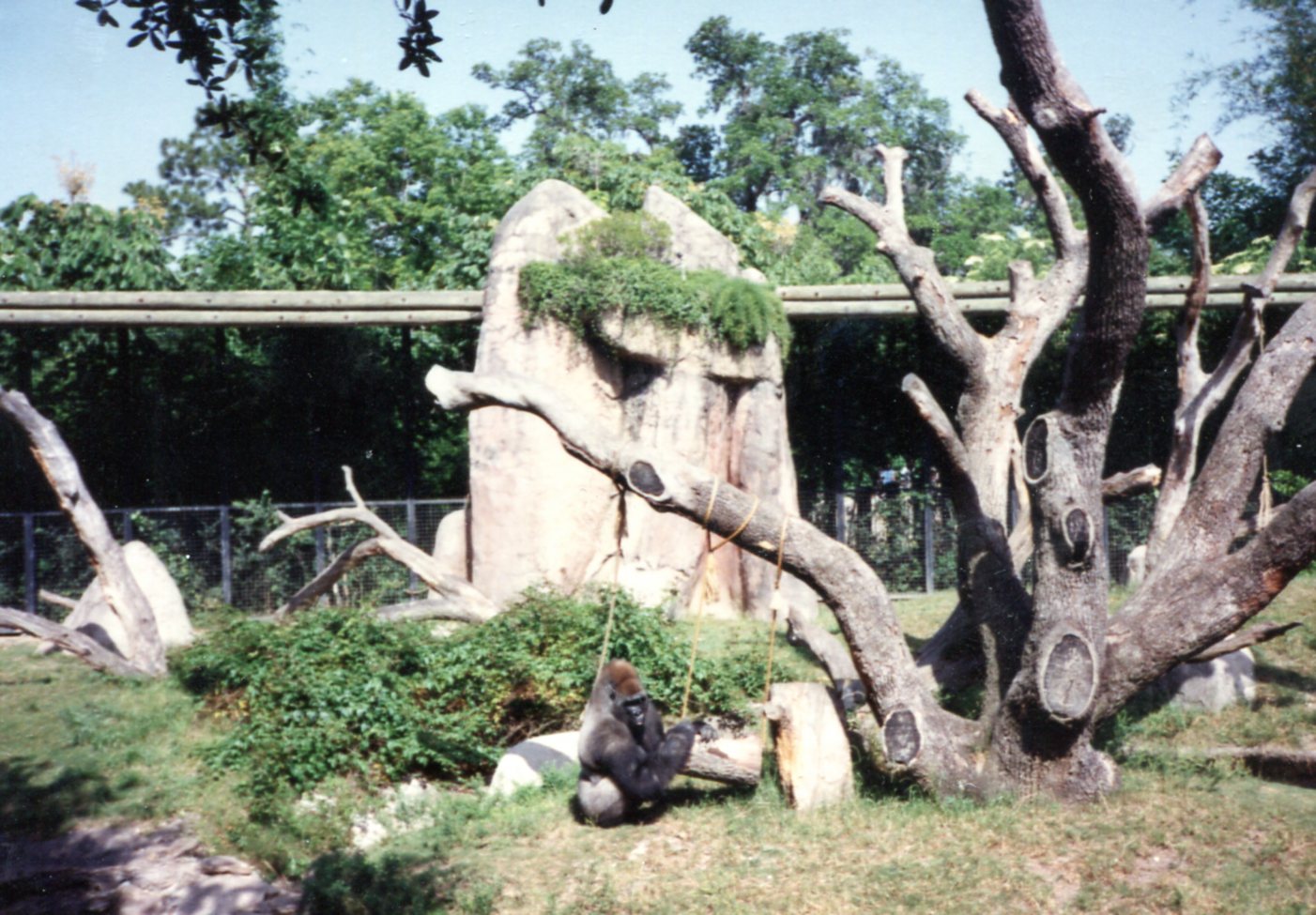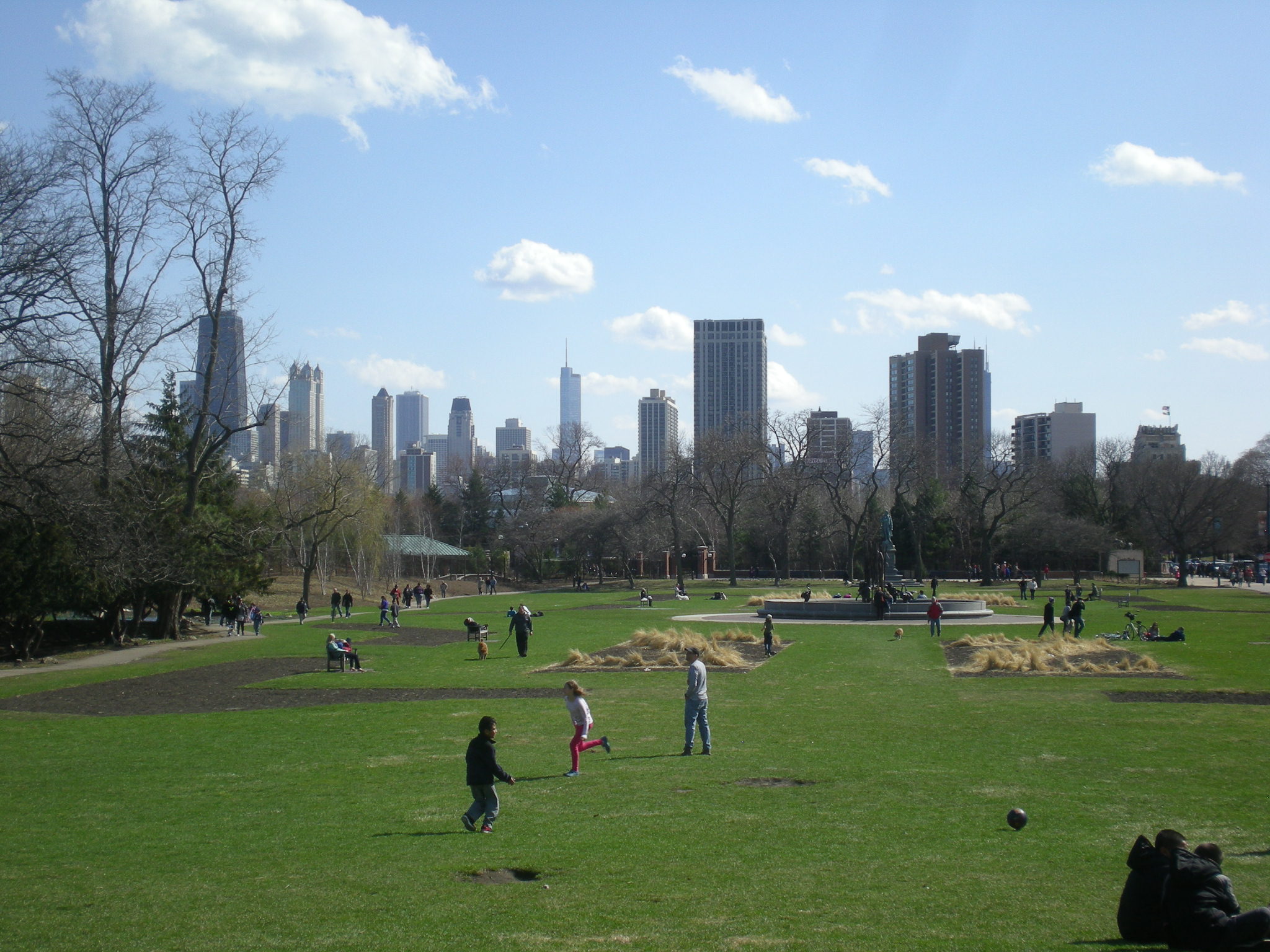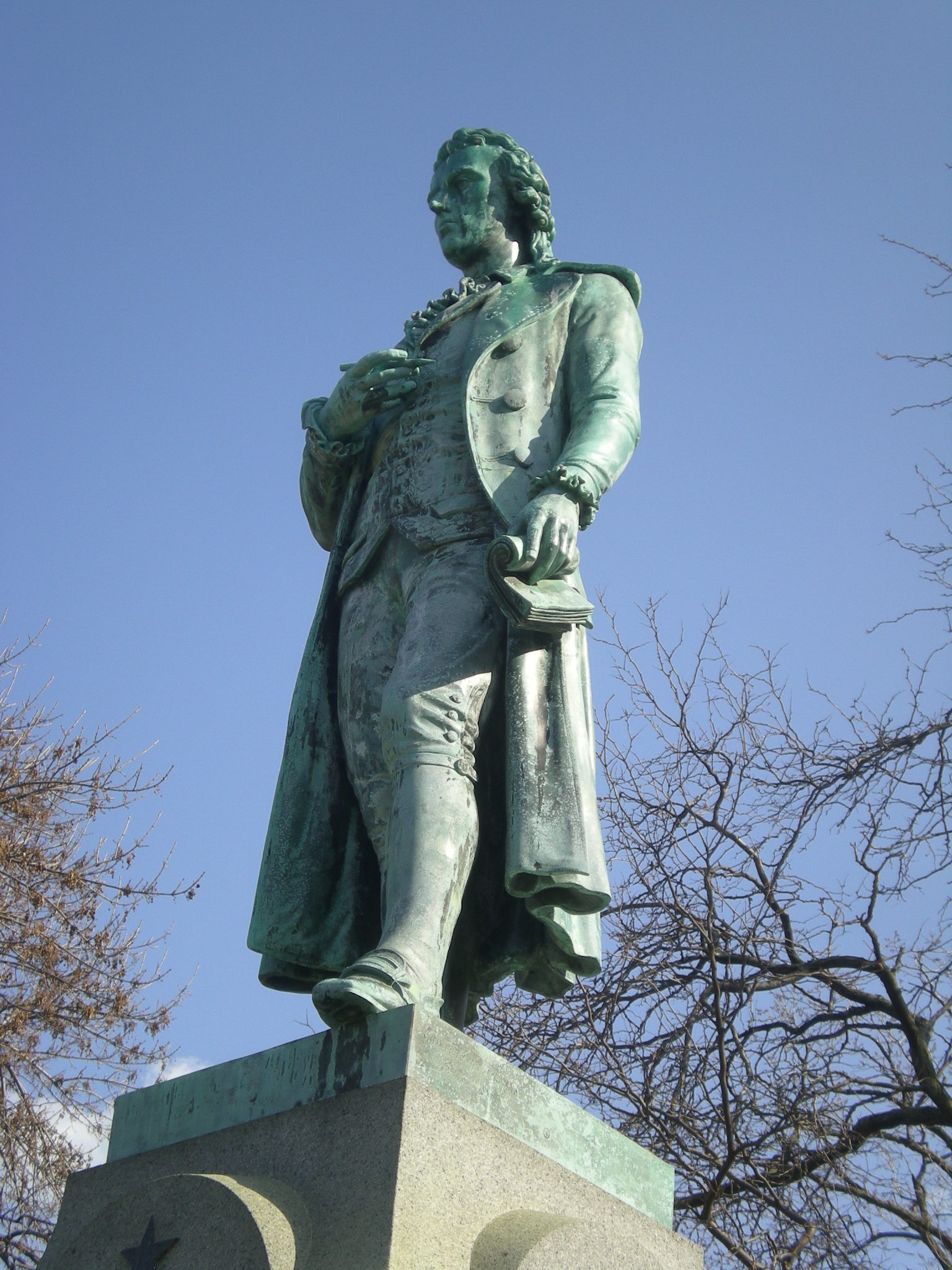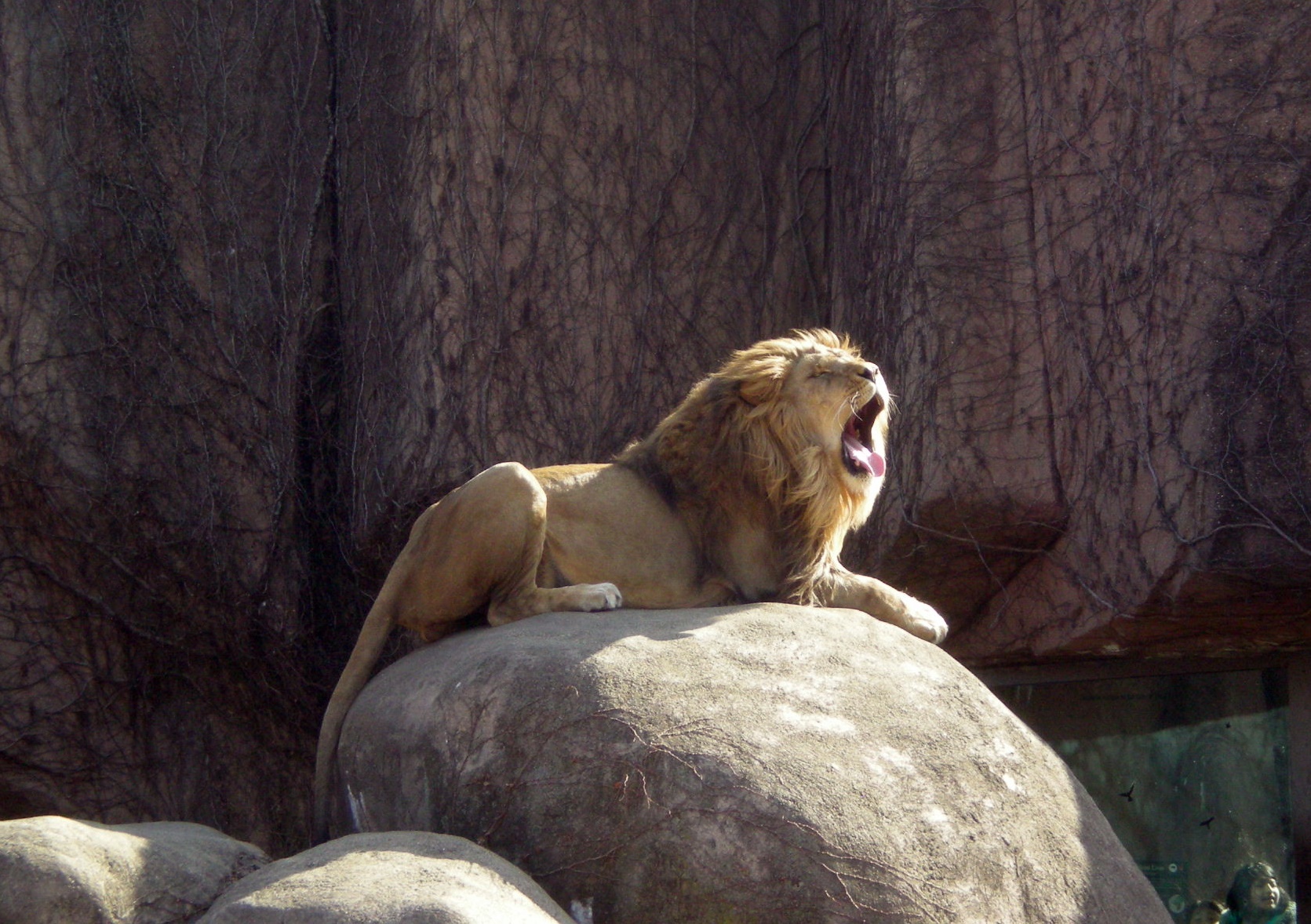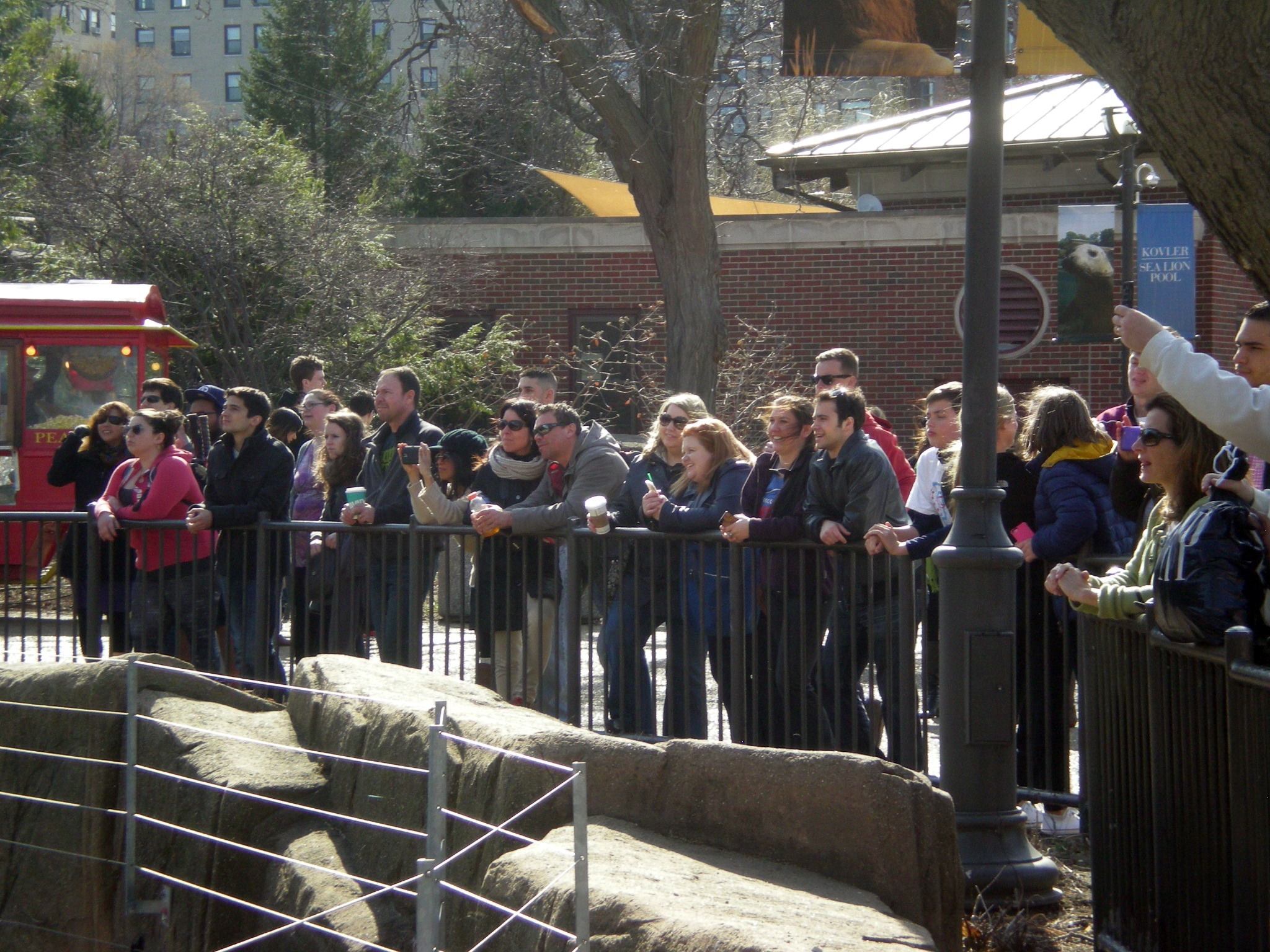Back in 1984, I took a trip to Chicago from Nashville for the Labor Day weekend. That was the first place I ever went after getting a full-time job. I stayed with my friend Rich, whose apartment was in the Lincoln Park neighborhood, where one could live comfortably just out of college.
That’s how long ago it was. Lincoln Park was then emerging from decades as — not full-blown slum, but maybe the St. Charles Place-States Avenue-Virginia Avenue of Chicago, so rents were still relatively affordable. Those days are long over.
During that visit, Rich suggested we go to the Lincoln Park Zoo, which we did. I’ve visited periodically over the decades since then, and always like it. Zoos can be much more than places to take your kids, though they are that too.
The animals, of course, are the prime attraction. Such as the great apes. This one’s a little hard to spot.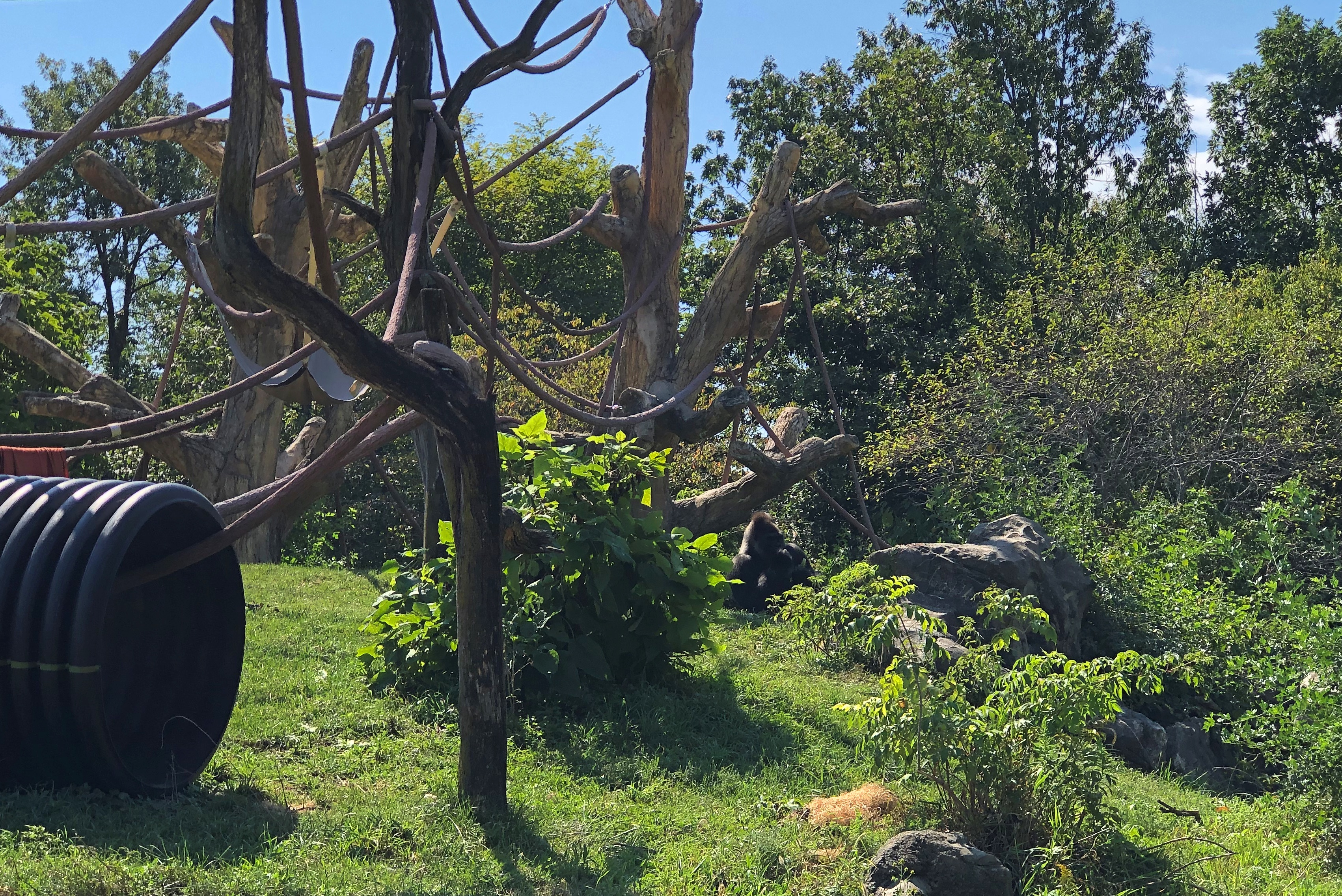
Another of his troop was indoors. He was easier to see. Well, if you were up front.

Some Père David’s deer. Native to China, they just barely escaped extinction by being bred in European zoos.
Flamingos. Lots of flamingos. Some sources say the collective is a flamboyance of flamingos, others say a stand.
I also like some of the zoo buildings, such the Kovler Lion House, outside and in.

No lions were to be seen that morning, however. Guess they were taking cat naps out of sight.
But it’s got style.

